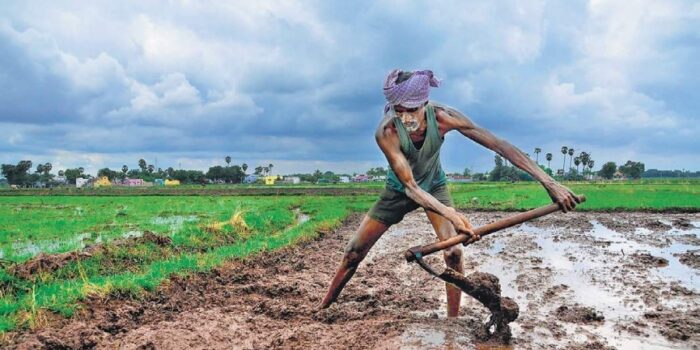
Image : Representational Purpose Only
The year 2021 marks the 50th anniversary of the reorganisation of the NE under the North Eastern Areas Reorganisation Act and the creation of the North Eastern Council under the NEC Act 1971. Together, these two Central laws projected the national vision of the NE of the future- a vibrant, progressive Region of seven states which together formed ” Eastern frontier of Bengal Presidency” as the British strategists perceived the region. In a way this perception was confirmed by enactment of the North Eastern Frontier Areas (Administration) Regulation,1954 and the 1971 Reorganisation Act. Subsequent grant of full statehood to Mizoram and Arunachal that concluded the process of reorganisation was based on this hope . Unfortunately it was belied by spread of identity politics in Assam and elsewhere which has given the NE an unfortunate connotation of being always in a ” reorganisation” mode. .
A sort of collateral damage the identity politics has caused is relegation of the ” development” component of the 1971 reorganisation which is evident from the lesser role of NEC, the mandated Regional planning body to lead the region to path of integrated development with the creation of DONER Ministry. This is reflected in delayed implementation of projects like Kaladan multi nodal connectivity project and slow growth . However slow growth is more pronounced in agriculture and rural development across the region, which this paper contends must be reversed, its core sectoral issues addressed, if North East is to move forward to a steady growth path.
One such area is the continuing practice of ecologically harmful and unsustainable ” Jhum cultivation” meaning Slash and burn agriculture in Hill areas . Under this, land owned by the community – usually found with dense tree cover with undergrowth is cleared of trees and jungles by community labor and made fit for ‘ mixed cropping’ :The burnt residues of the trees and jungles fertilise the soils remarkably well and ensure high yields of all crops grown on jhum lands. Tthat is ,cultivation of a variety of crops – cereals, vegetables, ginger, soyabean, potato and cash crops like cotton and thereafter cultivable plots are allotted to farmers by the community – usually 1-1.50 hectares to each family with right of use only for the crop season, and after harvest the land is kept fallow for tree cover to grow as the farming community will “shift” to another part next year. The plot cultivated once should ideally be put under cultivation only after 15-20 years necessary for regeneration of tree cover and the soil which constitute the ” Jhum cycle”. At a time when the population was small and not growing fast and Jhum land base was vast, the” Jhum cycle” was 20 – 30 years or so which made it sustainable because tree cover and soil health could be restored by then . With growth of population the Jhum cycle has been falling and presently it is 5-10 years and in Meghalaya even less than 5 years which means that the lands are being put to Jhum even when the jungles were thin and soils didn’t get adequate ” nourishment”. The resultant loss of biodiversity and top soil is of to such magnitude that it is no longer a viable mode of agriculture because the crops yields are falling and therefore
should be put to better forms of land use. It’s thus a strategic issue of development even though the importance of jhum is still very high as the area suitable for ” Jhum” cultivation in the North East is about 27 lakh hect though much less than 35.53 lakh hect of total net sown area under settled agriculture in the region. Of course much of the settled agriculture is in Assam (29.49 lakh hect) and only 2.1 lakh hect in Tripura, 1.58 lakh hect in Meghalaya and 0.79lakh hect in Imphal valley in Manipur as the other states – Arunachal, Nagaland and Mizoram being mountainous have little areas under settled agriculture ;and hence Jhum covering 17.13 lakh hect is critical for rural livelihoods in these states. Thus Nagaland and Mizoram have about 6.08 lakh hect and 6.04 lakh hect respectively under Jhum cultivation, Meghalaya 4.1 lakh hect and Manipur just about one lakh hect while Arunachal Pradesh has a potential of 2.48 lakh hect of potential Jhum land though the extent of cultivation is low. However, even when the area under Jhum is less than the area available for Jhum the damages to ecosystems it causes annually in the form of deforestation, depletion of bio diversity, soil erosion during monsoon are huge and largely irreversible. Thus “weaning away” the farmers of the north east Hills from Jhum cultivation to settled agriculture” has been the major plank of the agricultural development strategy of North East Hill areas right from the first 5 year plan; and yet it continues to be the main form of cropping in the hills as about 5 lakh tribal households depend on This is because the “jhum control schemes didn’t quite succeed.
The activities under Jhum control schemes in all north Eastern states followed a set pattern of identifying and developing lands which though uneven could be made suitable for seasonal crops or horticulture by terracing ,gully plugging and land leveling for which the schemes provide incentives to the community. This is how terrace cultivation and of seasonal and plantation crops like Tea, Coffee, Rubber, horticultural crops like orange, pineapples, strawberry and floriculture have come up in Meghalaya, Arunachal Nagaland and Tripura. However the Impact of these efforts has not been large enough to stop Jhum because of the tribals preference for sticky rice which could be grown only in Jhum land and that lands which could be developed at a reasonable cost for permanent cultivation are just not there in the hills. Indeed, Jhum provided not only the economic base of the egalitarian tribal societies but also much of the tribal customary laws and social practices.
In this scenario , the real socio economic impact of switch over to these cash crops which entail control over the land by farmers participating in a state Scheme for a long period has been the creeping privatization of Community owned lands even in Sixth Schedule areas.. This is seen in Meghalaya , Arunachal, Tripura and Nagaland with the introduction of Tea and also coffee and Rubber in Meghalaya . In Meghalaya private mining of coal and limestone apart from felling of trees in areas held by the tribal community under the Sixth Schedule of the Constitution for export to plywood industry have led to defacto ” privatization” of large tracts of Community land eroding in the process even the spirit of the Sixth Schedule to protect the tribal rights.
If one looks at the big picture in the background of climate change and the commitment India made at the 2015 Paris Climate Agreement to reduce carbon footprint, the issues boil down to the imperative need to lay down and strictly enforce a sustainable Land use policy backed up by law, scrap all policies and wrong practices such as mining of coal in Meghalaya for export to Bangladesh which are inimical to ecological security. For this, a regional approach is necessary because ecology does not recognize state borders. Hence the need for a lead role that only the NEC and the DONER Ministry could play to bring about a consensus and to incentivise the states to wean away from all harmful land use practices for short term gains.
A regional Land use Board at the NEC level by drawing expertise from across the country’s and State Land use Boards in States could initiate the process of taking stock of the damages caused and lay down a road map for restoration and more importantly to stop further damages to land resources including wetlands, rivers, forests ,wild life and environment. One cannot but note here that India is still to formulate a comprehensive national land use policy though in the 1970’s B.B.Vohra of the Agriculture Ministry conceptualized a national land use policy and setting up of the Land use Boards at the centre and the states. However this idea was not pursued which merits a revisit now as a part of the strategy to deal with the challenge of climate change. It is also seen that a large proportion of cases before the National Green Tribunal are about lands put to use harmful to environment and ecology for want of an integrated Land use management system backed up by laws and policies to protect land resources covering wetlands, forests and habitats of wild life and to ensure that lands at put it use on scientific and not to meet the demand of the user. Statutory Land use Boards might bridge this gap in environment governance.
The north east is biodiversity hot spot of the Sub region covering Eastern India , Bhutan, Bangladesh and West Myanmar; and therefore ecological security of this sub-region depends on the North East Hills as for example, two of the four major river systems of Bangladesh – Brahmaputra – Jamuna and Surma- Meghna originate in the North East . Thus conversation of forest cover and the eco system of the region is vital for ecological security of this Sub region of South Asia .Thus “Jhum control” is not to be seen in isolation but as a part of the efforts to provide ecological security and to meet the looming threat of climate change . It’s now time to act.
[the_ad id=’22722′]


















